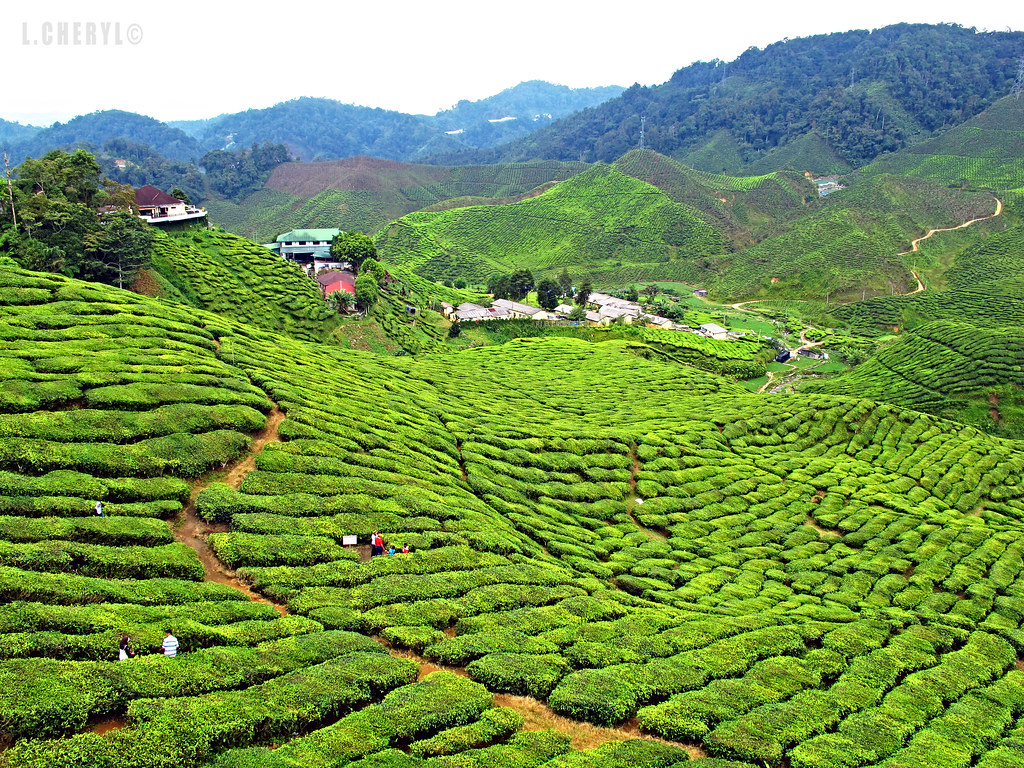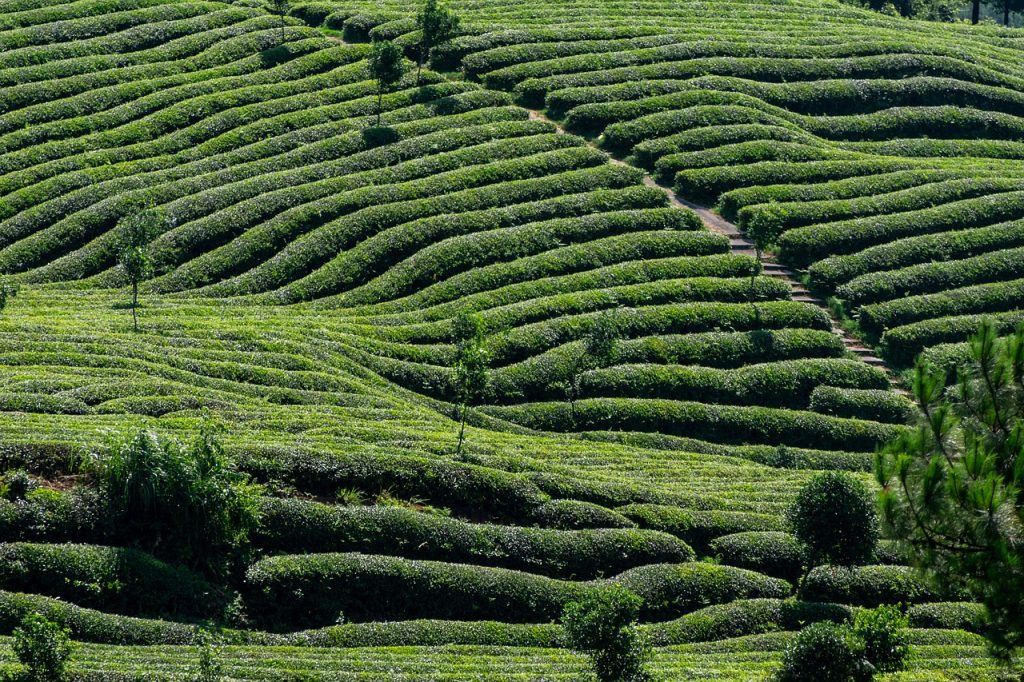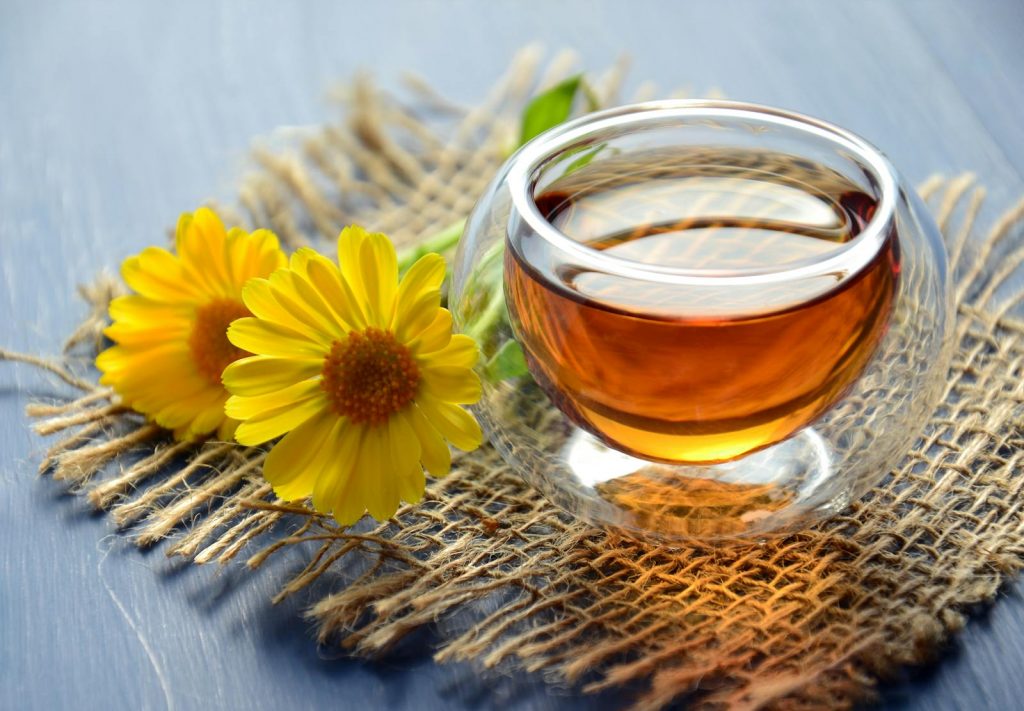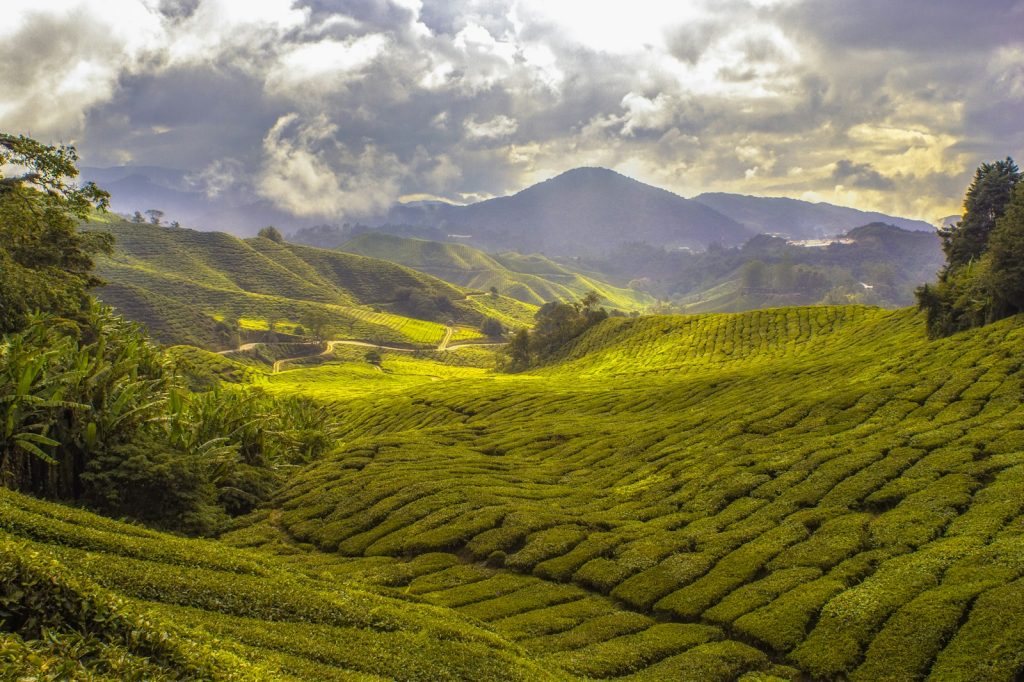From China to the World: How Tea Spread Across Continents
The History of Tea: Tea, one of the world’s most beloved and widely consumed beverages, has a rich and fascinating history that spans thousands of years. From its legendary discovery in ancient China to its global popularity today, tea has significantly shaped cultures, trade, and social customs worldwide. Let’s journey through time to explore the captivating history of tea.
Origins in Ancient China
The origins of tea can be traced back to ancient China, where the consumption of this beloved beverage has a rich and fascinating history. According to legend, tea was discovered by the Chinese Emperor and herbalist Shen Nong around 2737 BCE. While boiling water under a tree, a leaf from the tree fell into the pot, creating a pleasant aroma and taste. Intrigued, Shen Nong tasted the infusion and found it refreshing and invigorating. This lucky accident led to the discovery of tea.
Originally, tea was used primarily for its medicinal properties. It was highly valued for aiding digestion, promoting alertness, and providing a sense of well-being. As its popularity grew, tea drinking gradually extended beyond medicine and became integral to Chinese culture and social life.
During the Tang Dynasty (618-907 CE), tea drinking became more elaborate and ceremonial. The Chinese elite embraced tea as an art form, with poets and scholars composing verses and essays about the virtues and pleasures of tea. Tea ceremonies became integral to social gatherings, symbolizing hospitality and refinement.
Tea cultivation also saw significant advancements during the Tang Dynasty. The development of various tea processing methods, such as steaming and grinding the leaves, led to powdered tea, which became highly sought after.
Tea continued to gain prominence in subsequent dynasties, such as the Song (960-1279 CE) and Ming (1368-1644 CE) Dynasties. The delicate green tea known as “matcha” became a favorite among Zen Buddhists and aristocrats, and the “Tea and Zen” culture emerged, emphasizing simplicity, tranquility, and the appreciation of nature.
Tea eventually spread beyond China’s borders and became an essential commodity in international trade. It made its way to Japan during the Tang Dynasty, profoundly influencing Japanese culture and traditions. By the time of the Yuan Dynasty (1271-1368 CE), tea had reached Europe through the ancient Silk Road trade routes.
Today, tea remains an integral part of Chinese culture, and China remains one of the world’s largest producers and consumers of tea. The rich heritage of tea continues to be celebrated globally, with diverse varieties and traditions stretching back thousands of years, making it one of humanity’s most enduring and cherished beverages.

Early Consumption and Spread
The ancient origins of tea consumption and its spread can be traced back to China. According to legend, tea was first discovered around 2737 BCE during the reign of Emperor Shen Nong. The story goes that some tea leaves accidentally fell into the pot while boiling water, resulting in a delightful and aromatic beverage. This serendipitous event marked the beginning of tea’s remarkable journey through history.
Initially valued for its medicinal properties, tea’s popularity soared during the Tang dynasty (618-907 CE) when it transitioned from being solely therapeutic to a pleasurable and social drink. As time passed and the Song dynasty (960-1279 CE) took center stage, tea became an indispensable part of Chinese culture and society. During this period, the preparation and serving of tea evolved into an art form, giving rise to intricate tea ceremonies and rituals that enhanced the significance of tea in daily life.
Tea’s spread to other parts of Asia began through cultural exchange and trade routes, notably the Silk Road. It reached Japan in the 9th century when Buddhist monks studying in China brought back tea seeds and the knowledge of tea preparation. Japan developed its unique tea culture, which gave rise to the renowned Japanese tea ceremony.
The next significant milestone in the tea spread was during the 16th century when Portuguese and Dutch traders brought tea to Europe. Initially considered a luxury item reserved for the elite, its popularity steadily grew, and by the 17th century, tea had become a fashionable beverage among European nobility and high society.
The British East India Company played a crucial role in the global spread of tea. By the 18th century, the British had established tea plantations in India and Ceylon (now Sri Lanka) to meet the increasing demand for tea in Europe. The establishment of tea plantations in these regions not only satisfied the European appetite but also transformed the economies and societies of these countries.
Tea also found its way to the American colonies during the 17th century. Still, the infamous Boston Tea Party of 1773 brought tea into the spotlight as a symbol of resistance against British rule. Despite this, tea remained popular in the United States, and its consumption grew.
Tea has been associated with various rituals, cultural practices, and social gatherings throughout history, making it an integral part of the world’s diverse cultures. Today, tea is one of the most widely consumed beverages globally, cherished for its soothing properties, rich history, and various flavors. The early consumption and spread of tea have left an indelible mark on human civilization, connecting people and cultures across continents and shaping social customs for generations to come.
Tea’s Arrival in Europe
Tea’s arrival in Europe is a fascinating chapter in the history of trade and cultural exchange between the East and the West. The story begins in ancient China, where tea has been cultivated and consumed for thousands of years. Chinese legends attribute the discovery of tea to Emperor Shen Nong in 2737 BCE. It was initially used for medicinal purposes, but tea drinking became a cherished social and cultural tradition in China.
The first documented evidence of tea’s existence in Europe dates back to the 16th century when Portuguese and Dutch traders established direct maritime routes to Asia. In the early 17th century, the Portuguese princess Catherine of Braganza married King Charles II of England and brought the custom of drinking tea to the English court. This introduction sparked curiosity and interest among the English aristocracy.
As the demand for tea grew, the British East India Company became a dominant player in the tea trade. They established trading posts in India and China, effectively controlling the tea supply to Europe. However, the high cost of tea and limited accessibility made it a luxury beverage primarily enjoyed by the elite.
During the 18th century, tea drinking spread across various European countries, with each nation developing its tea traditions and ceremonies. France, the Netherlands, and Russia were among the countries that embraced tea culture during this period.
The 19th century saw significant developments in the tea industry. The British began cultivating tea in India and Sri Lanka (then Ceylon) to reduce the trade deficit with China to establish a more stable and controlled supply. This led to the expansion of tea plantations in these regions, shaping their economies and societies.
The popularity of tea continued to grow in Europe and beyond, with different varieties and blends becoming more accessible to people of various social backgrounds. By the 20th century, tea had firmly established itself as one of the most widely consumed beverages worldwide.
Tea’s journey to Europe not only influenced the drinking habits of the continent but also sparked changes in social etiquette, dining customs, and the design of teaware. Tea remains an integral part of European culture today, with each country retaining its unique rituals and preferences for this beloved beverage.

The British Tea Culture and the Boston Tea Party
The British tea culture and the Boston Tea Party are two interconnected aspects that significantly shaped the history and relations between Britain and its American colonies during the 18th century.
British Tea Culture:
Tea has a long and storied history in British culture, dating back to the 17th century when it was introduced to England by Catherine of Braganza, the Portuguese wife of King Charles II. Initially, tea was a luxury beverage enjoyed by the aristocracy, but its popularity quickly spread throughout all social classes. By the 18th century, tea had become integral to British daily life and social gatherings.
The British developed a sophisticated tea-drinking culture, with formal tea ceremonies and specific etiquettes. Tea was typically served in elegant teapots and delicate china cups, often accompanied by cakes, pastries, and finger sandwiches during afternoon tea, a tradition attributed to Anna, the Duchess of Bedford, in the 1840s. The British East India Company, established in 1600, played a crucial role in the tea trade, importing vast quantities of tea from China, which further fueled the popularity of tea in Britain.

The Boston Tea Party:
The Boston Tea Party was pivotal in American history on December 16, 1773. It protested against the British Tea Act, which granted the British East India Company a monopoly on tea sales in the American colonies. The colonists vehemently opposed the act, viewing it as a blatant attempt to tax them without representation in the British Parliament.
In response to the Tea Act, a group of American colonists dressed as Native Americans boarded three British ships in Boston Harbor and dumped 342 chests of tea belonging to the British East India Company into the water. This civil disobedience became known as the Boston Tea Party and was a powerful symbol of resistance against British oppression. The British government’s subsequent punitive measures further inflamed tensions, eventually leading to the American Revolutionary War.
The Boston Tea Party was a pivotal moment that intensified the rift between Britain and its American colonies, ultimately contributing to forming an independent United States.
In conclusion, British tea culture and the Boston Tea Party have intertwined aspects of history, with tea playing a prominent role in both. While British tea culture is a cherished tradition that endures to this day, the Boston Tea Party is a historic act of defiance that helped shape American history and its struggle for independence.

Tea in India, Sri Lanka, and other countries
Tea is a trendy beverage millions enjoy worldwide, and India and Sri Lanka play pivotal roles in its production and consumption. Both countries have a rich history and cultural connection to tea.
India:
India is one of the largest tea-producing countries in the world and has a diverse range of tea varieties. The British introduced commercial tea cultivation in India during the colonial era in the early 19th century. Tea estates are spread across various regions today, with Assam, Darjeeling, and Nilgiri being the most well-known tea-producing regions.
Assam is famous in northeastern India for its robust and malty black teas. Darjeeling, nestled in the foothills of the Himalayas, produces the world-renowned Darjeeling tea, known for its delicate flavor and muscatel notes. The Nilgiri Hills in southern India have a variety of black and green teas with a smooth, floral taste.
Tea is integral to Indian culture and is enjoyed throughout the day. Masala chai, a spiced milk tea, is a popular and cherished beverage, often accompanied by snacks or sweets.
Sri Lanka:
Sri Lanka, formerly known as Ceylon, is another major tea-producing nation renowned for its Ceylon tea. The tea industry in Sri Lanka was established during British colonial rule in the 19th century. Today, tea plantations stretch across the central highlands, particularly in regions like Nuwara Eliya, Kandy, and Dimbula.
Ceylon tea is celebrated for its distinct flavor profiles, ranging from light and delicate to bold and robust, depending on the elevation and processing method. The country’s varied climate and altitude contribute to the diversity of flavors in its teas.
Other Countries of Tea:
Besides India and Sri Lanka, tea is cultivated and enjoyed in many other countries worldwide. Some of the notable tea-producing nations include:
1. China: As the birthplace of tea, China has a centuries-old tradition of tea cultivation. It is famous for its green, black, white, yellow, oolong, and pu-erh teas.
2. Japan: Japan is renowned for its meticulous tea cultivation, primarily focusing on green teas, such as matcha, sencha, and gyokuro.
3. Kenya: Kenya is a major player in the global tea market and produces a significant amount of black tea, mainly utilized in tea blends.
4. Taiwan: Taiwan, known for its oolong teas, has a thriving tea culture and produces some of the world’s finest oolongs.
5. Turkey: Tea, or “çay,” is an integral part of Turkish culture and is typically served in small glasses, dark and strong, often accompanied by sweet treats.
6. Bangladesh: Tea is a staple beverage in Bangladesh, with a significant portion of its population engaged in the tea industry.
7. Iran: Iranian tea, known as “chai,” is a popular beverage, often served with sugar cubes or sweets.
Tea remains a cultural cornerstone in these countries, with unique preparation methods, traditions, and social significance. It is a cherished part of their daily lives and an essential aspect of their culinary heritage.
Tea in the Modern Era
The 19th and 20th centuries saw tea production and consumption spread to various parts of the world. The British tradition of afternoon tea continued to evolve, and tea became an integral part of daily life in many countries. In the early 20th century, iced tea emerged as a refreshing alternative to hot tea, gaining popularity in the United States and other warm climates.
Tea Today: Global Appeal and Health Benefits
Tea, a beverage with a history dating back thousands of years, continues to enjoy widespread global appeal today. Initially discovered in China, tea has become an integral part of cultures worldwide, and its diverse varieties cater to various tastes and preferences. From the traditional Chinese green teas to the robust Assam black teas of India and the delicate Darjeeling teas from the Himalayan region, each type offers a unique flavor profile and experience.
One of the reasons for tea’s global popularity is its ability to bring people together. Tea ceremonies in Asia, the Middle East, or the British afternoon tea tradition symbolize hospitality, friendship, and cultural exchange. Additionally, the soothing nature of tea consumption offers a sense of relaxation and comfort, making it a preferred choice in many social settings and daily routines.
Beyond its cultural significance and enjoyment, tea has been increasingly recognized for its health benefits. Various studies have shown that tea contains powerful antioxidants, such as catechins in green tea and theaflavins in black tea, which may help reduce the risk of chronic diseases and support overall well-being. Regular tea consumption has been associated with improved heart health, reduced inflammation, and potential protection against certain types of cancer.
Additionally, tea contains L-theanine, an amino acid that promotes relaxation and mental clarity. It can offer a mild and balanced caffeine boost, making it an excellent alternative to coffee for those seeking a more moderate energy lift without the jitters.
Herbal teas, such as chamomile, peppermint, and rooibos, are caffeine-free and have gained popularity for their calming and soothing properties, aiding sleep and digestion.
Furthermore, the rising interest in tea has led to various innovative tea blends and infusions. Tea connoisseurs and health-conscious individuals can find multiple options, including herbal blends, fruit-infused teas, and functional teas containing additional beneficial ingredients like turmeric, ginger, and hibiscus.
As the world becomes more health-conscious and environmentally aware, tea’s appeal continues to grow. Organic and sustainably sourced teas have gained popularity, aligning with the preferences of environmentally conscious consumers.
Tea’s global appeal can be attributed to its rich cultural heritage, diverse flavors, and potential health benefits. As the demand for healthier and more sustainable beverage choices rises, tea’s status as a beloved and versatile drink seems destined to endure for centuries.
From its mythical beginnings in ancient China to its present-day popularity worldwide, tea’s history is a testament to its enduring appeal and cultural significance. As a beverage that has transcended borders and time, tea remains a cherished and cherished part of daily life for millions around the globe.
Watch Video
FAQ about Tea
Q: What is tea?
A: Tea is a beverage made from the leaves of the Camellia sinensis plant. The leaves are harvested, processed, and steeped in hot water to create the infusion known as tea.
Q: What are the different types of tea?
A: The main types of tea are green tea, black tea, white tea, oolong tea, and pu-erh tea. These types differ in processing methods, oxidation levels, flavors, and aroma profiles.
Q: What is the difference between black tea and green tea?
A: The main difference between black and green tea is their processing. Black tea is fully oxidized, producing a dark color and robust flavor. Green tea, on the other hand, is minimally processed and not oxidized, leading to a lighter color and a more delicate, grassy taste.
Q: How is tea prepared?
A: To prepare tea, hot water is poured over tea leaves or tea bags, allowing them to steep for a specific time. The steeping time and water temperature may vary depending on the type of tea being brewed. After soaking, the tea is typically strained or removed and ready to be enjoyed.
Q: What are the health benefits of tea?
A: Tea is often associated with various health benefits. It contains antioxidants that help protect the body against free radicals. Some studies suggest that tea may aid in weight management, promote heart health, improve mental alertness, and have potential cancer-fighting properties. However, individual results may vary, and it’s always best to consult a healthcare professional for personalized advice.
Q: Can I add milk or sweeteners to tea?
A: Yes, it is common to add milk, sugar, honey, or other sweeteners to tea, depending on personal preference. However, adding milk or sweeteners can alter the tea’s flavor profile, so it’s recommended to experiment and find the combination that suits your taste.
Q: Are herbal teas considered natural teas?
A: Technically, herbal teas are not true because they are not made from the leaves of the Camellia sinensis plant. Herbal teas, or tisanes, are infusions from herbs, flowers, fruits, or other botanical ingredients. Examples include chamomile tea, peppermint tea, and rooibos tea.
Q: How should I store tea?
A: Tea should be stored in an airtight container, away from light, heat, moisture, and strong odors. This helps maintain its freshness and flavor. It is also recommended to separate different tea types to prevent flavor contamination.
Q: Does tea contain caffeine?
A: Yes, tea naturally contains caffeine, although the caffeine content can vary depending on the type of tea. Generally, black tea has the highest caffeine content, followed by oolong, green, and white tea. Herbal teas are usually caffeine-free, but there may be exceptions like Yerba Mate.
Q: Can tea be enjoyed iced?
A: Yes, tea can be enjoyed both hot and iced. Iced tea is trendy in many parts of the world, especially during hot weather. To make iced tea, brewed tea is usually cooled and served over ice, sometimes with added sweeteners or citrus slices for flavor.






